Jocelyn Lin
- Problem Set #1
|
Part 1
|
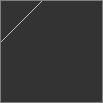 p1.dbn p1.dbn |
paper 80
pen 23
line 0 60 40 100
|
| |
Create a program to draw a carefully chosen one line on a paper of your choice.
|
Part 2
|
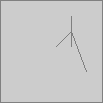 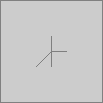 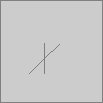 p2.dbn p2.dbn |
//part 2
//control 3 lines a=70, b=50, c=43
paper 20
pen 50
set g 43
line g (g+15) g (g-15)
line g g (15+g) (100-g)
line g g (g-15) (g-15)
|
| |
Create a program that uses one variable as a means to control a set of 3 lines. Capture 3 instances of the graphic (A,B,C).
|
Part 3
|
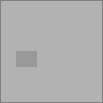 p3.dbn p3.dbn |
paper 30
pen 40
repeat a 15 35
{
line a 35 a 50
}
|
| |
Create a program to draw a single filled rectangle. Again, choose carefully.
|
Part 4
|
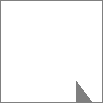 p4.dbn p4.dbn |
paper 0
pen 50
repeat a 75 90
{
line 75 20 a 0
}
|
| |
Create a program to draw a single filled triangle. Use your good judgement.
|
Part 5
|
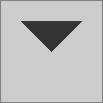 p5.dbn p5.dbn |
paper 20
pen 80
repeat a 50 20
{
set b (100-a)
{
line a b (100-a) b
}
}
|
| |
Think of all the ways you can draw a filled triangle, and choose one. Utilize the properties of the drawing method you choose, to create a single filled triangle.
|
Part 6
|
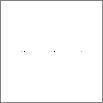 p6.dbn p6.dbn |
//anticipation
paper 0
set v 50
set h 20
set [h v] 30
set [(h+3) v] 100
set [(h+30) v] 30
set [(h+33) v] 100
set [(h+60) v] 30
|
| |
Set 5 dots on a paper of your choice. Evoke an emotion with your choice in placement of dots.
|
Part 7
|
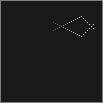 p7.dbn p7.dbn |
//kissy fish
paper 90
//head
repeat f 1 6
{
set [(80+(2*f)) (85-(2*f))] 10
set [(80+(2*f)) (65+(2*f))] 10
}
//body
repeat f 1 15
{
set [(50+(2*f)) (70+f)] (70-(f*4))
set [(50+(2*f)) (80-f)] (70-(f*4))
}
|
| |
Create a representational picture (i.e. something that looks like something) using just 8 (at maximum) dotted lines.
|
Part 8
|
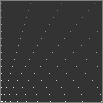 p8.dbn p8.dbn |
//dawn
paper 80
repeat a 0 20
{
repeat b 0 15
{
set [((a*a)-(b*b)) (b*7)] ((a+b)*2)
//set [((a*a)-(b*b)-(a*b)) (b*3)] ((a+b)*2)
}
}
|
| |
Using a nested loop, fill the entire field with the value of some calculation that can be appreciated. Do not use the Line command.
|
Part 9
|
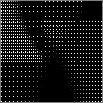 p9.dbn p9.dbn |
paper 100
repeat a 0 25
{
repeat b 0 20
{
//set c ((a*a)-(b*b))
set [(a*2)(100-(b*3))] ((a*a)-(b*b))
set [(a*4)(b*5)] ((a*a)-(b*b))
set [(100-(a*3))(b*4)] ((a*a)-(b*b))
}
}
|
| |
Using a nested loop, create a stippled pattern of dots that can be enjoyed for its complexity. Do not use the Line command.
|
Part 10
|
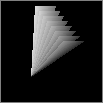 p10.dbn p10.dbn |
//fan
paper 100
set h 30
set v 25
repeat r 1 8
{
repeat a h (h+20)
{
pen ((a-25)*2+(r*4))
line h v ((r*4)+a) (100-(5*r))
}
}
|
| |
Using the Line command, and a (few) nested loop, create an image that evokes a three-dimensional feeling through shading.
|
 p1.dbn
p1.dbn 

 p2.dbn
p2.dbn  p3.dbn
p3.dbn  p4.dbn
p4.dbn  p5.dbn
p5.dbn  p6.dbn
p6.dbn  p7.dbn
p7.dbn  p8.dbn
p8.dbn  p9.dbn
p9.dbn  p10.dbn
p10.dbn